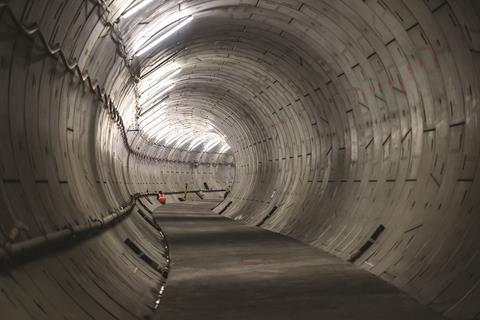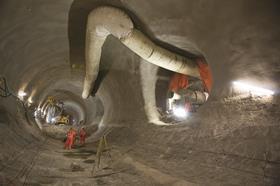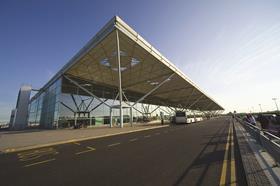Lack of investment in UK infrastructure could be a serious barrier to economic growth. But for all the positive noises from the chancellor, is the government really prepared to find the money to pay for it?

In modern motor manufacturing, the “just-in-time” philosophy rules.
Modern automotive plants are run on tightly managed production schedules, with orders for components often placed the day they are due to go on the assembly line. In this environment, sympathy is short for suppliers who literally can’t deliver.
So for Reading-based chassis component manufacturer Magal Engineering, one of the world’s top four makers of vehicle thermostats, the state of the UK’s crowded road network, and the regular delays it causes, is a big problem. Hence Magal pays £10,000 a month to rent a warehouse in Germany so that it can guarantee it gets its parts to its customers on time.
The cost is just one example of the burden placed on businesses by the UK’s relatively poor infrastructure, and it shows why improving the nation’s roads, railways, transport and energy infrastructure has become such a priority for the new government’s business-friendly chancellor George Osborne.
But the World Economic Forum’s latest survey of global competitiveness, published last autumn, ranked the UK 27th in the world for infrastructure provision. So the challenge is huge, particularly in areas, such as energy, where it is expected that the private sector will fund capital investment. This in a context where the government’s overall net investment (its preferred measure of capital spending) has been falling sharply, running in 2014/15 at around £31bn, just 60% of the annual rate of five years previous. And with this figure not forecast to rise despite flagship projects like HS2, the new Conservative government will have a hard task making a major improvement in the UK’s infrastructure provision.
London stalling
Alexander Jan, director of infrastructure transaction advice at Arup, wants to see early action during the next five years. He says: “Despite the statements from the last government, if you look at the figures government net capital investment actually shrank by a third between 2009/10 and 2013/14. There hasn’t been the follow through.”
What he describes as the “sorry story of A14” best exemplifies this shortfall in delivery. The project to upgrade the trunk road connecting Cambridge and Huntingdon was cancelled soon after the 2010 election as part of the wider clampdown on public spending, only to be reinstated a few years later by which point congestion had got a lot worse.
The cost of delay can probably be seen most visibly in London. While other parts of the UK grumble that the South-east enjoys more than its fair share of transport investment, London’s road and rail network still struggles to keep pace with economic and population growth.
“It’s operating at full capacity,” says David Leam, director of infrastructure at London First, who argues that little more can be achieved by improving the capital’s existing underground network.
“We are getting to the limits of what clever signalling and better rolling stock can do because you have to be able to stop and let people on and off the train. Even with additional investment you are not going to be able to get much more than one more train an hour.”
The pressure on London’s transport network means that even when it is opened in three years time, the Crossrail line (pictured above and previous page) will be full from day one, he predicts.
New capacity, most notably Crossrail Two that is mooted to connect south-west and north-east London, is needed in order to relieve pressure on existing Underground and commuter rail lines.
The risk of not acting now, Leam argues, is that “things will get steadily worse”.
“Stations will get more crowded and will have to shut more often at the morning peak - journeys will get less reliable because it’s hard to shift that number of bodies around,” he says.
These problems will eventually undermine London’s attractiveness as a business location with knock on impacts on the wider UK economy, Leam warns. “People at the world level will start to notice and won’t want to locate here because things don’t work properly.”

Infrastructure
�ڶ�����’s Challenge 15 series of features takes a detailed look at the key challenges the new government must address to avoid a critical failure of the built environment to support the UK economy and society. The series is informed by �ڶ�����’s Agenda 15 manifesto for construction, which was published in January after a year long consultation with industry. The manifesto, which can be viewed in full at www.building.co.uk/agenda15, makes eight top line recommendations designed to help promote a more efficient, sustainable construction sector that could better deliver the UK’s built environment needs, and better help the UK economy. On infrastructure, our top line recommendations for the government are:
● Urgent review of long-term infrastructure planning with the aim of setting up an independent infrastructure body that, in broad terms, meets the aims of Sir John Armitt’s proposal for a National Infrastructure Commission
● An infrastructure minister sitting in cabinet who oversees the setting up of the body and the subsequent government adoption and implementation of its recommendations
The chancellor’s hard hat
More broadly, poor infrastructure provision contributes to the productivity shortfalls that continue to dog the UK economy.
Stephen King, deputy director of the body set up to promote growth in the London Stansted Cambridge corridor, the London-Stansted-Cambridge Consortium, says that good quality infrastructure is key to growth in the modern economy. “Places at the moment grow because of their access to talent: Google went to King’s Cross because they had access to 6 million people in less than an hour.”
The good news is that George Osborne gets the case for infrastructure investment, according to Richard Threlfall, UK head of infrastructure and construction at KPMG.
“The chancellor clearly has a personal commitment to investing in the future of this country and investing in infrastructure.”
In a nod to the annually updated National Infrastructure Plan, he says: “Nobody will recall such a long forward pipeline of major infrastructure spending in this country with the government committed to very significant levels of spending on roads and railways.”
Leam agrees that Osborne’s heart is in the right place on infrastructure, with a commitment to big spending programmes on roads and rail. “There’s no doubting George Osborne’s passion and commitment - people often chuckle that he’s always being photographed in a hard hat and a high-vis jacket, but if you care about infrastructure that’s a great thing. He’s really embraced it as something he wants to be remembered for.”
The problem is that Osborne will have his hands full over the next two years renegotiating Britain’s relationship with the European Union. This will give Jim O’Neill, the ex-Goldman Sachs executive who has just taken on the role of infrastructure czar, a pivotal role.
However, as the gatekeeper of the nation’s finances, both will have to contend with the Treasury’s deep-seated cultural resistance to splashing out. The government’s broader public spending clampdown further narrows the room for manoeuvre on investment.
The Office for Budget Responsibility’s latest fiscal outlook shows that public sector net investment, much of which is accounted for by infrastructure, is due to drop over the next three years to as low as £28.6bn in 2017/18, before recovering after that. Once inflation is taken into account, the share of GDP accounted for by public sector investment drops much more quickly, to well below half the 2009/10 total.

Borrowing for the future
Business may have largely given short shrift to Labour’s manifesto. But the opposition’s proposal to continue borrowing for investment is an idea many believe Osborne should steal.
Arup’s Jan says “Everybody recognises that the public finances are a priority but too often in attempting to cut capital, revenue expenditure is preserved: in protecting big budget areas like health, it makes it harder to protect capital spending. The markets and rating agencies would be quite relaxed about a government borrowing for lasting infrastructure.”
However, Osborne was this week set to rule out this option, unveiling plans for a rule forcing departments to keep surpluses of both current and capital spending. Leam argues for a more relaxed approach to infrastructure investment, given the government’s current very low borrowing costs. “It would be a mistake for the government to think of all kinds of spending as the same. We need to be a bit more sophisticated about the different sorts of borrowing and investment that we make,” he says.
“Clearly there are limits on the debt ceiling but provided the government is doing things in the round to bear down on the deficit, some additional borrowing on things like infrastructure would be welcomed.”
For much of the last parliament, cash-strapped ministers appeared to pin hope on the private sector to plug the infrastructure funding gap. However, Osborne’s initiative to recruit the UK’s pension funds to increase their investment in the asset class has proved to be a damp squib.
Nearly four years after the concept was first aired in the 2011 autumn statement, the Pensions Infrastructure Platform (PIP) has invested less than £1bn in projects, all of which has been committed to buying already built private finance initiative schemes, rather than financing new build.
A spokeswoman for the PIP said the organisation still had no plans to invest in construction schemes, reflecting how the pension fund industry’s traditionally highly averse stance to development risk still holds sway.
The private sector
Likewise progress on persuading the private sector to fund a new generation of nuclear power stations remains stalled, despite the last government underwriting large parts of the investment. This lack of progress is despite the fact energy regulator Ofgem has recently calculated that the UK’s electricity generating capacity is only 4% greater than peak-time use, making the country vulnerable in the event of power plant failures.
A powerful but independent agency to assess and prioritise the UK’s infrastructure needs, as called for by former Olympic Delivery Agency chair John Armitt and supported by �ڶ�����’s Agenda 15 campaign, could help de-risk such projects.
Threlfall says: “There’s still strong desire in the infrastructure community to commit to an Armitt-like, long-term vision for delivery of infrastructure in the country.”
However, given the aversion of David Cameron’s Conservatives to what they would perceive as a Labour idea and new bureaucracy, any new agency is likely to remain off the agenda.
In the absence of new institutional arrangements, an early decision on the location of the new south-east runway capacity (see box) is top of most observers’ lists. Beyond that they are keen for ministers to fulfil their pre-election promises to boost transport investment, in particular to support Highways England’s recently announced five year capital programme.
“Maintaining certainty on road investment and ongoing maintenance that was announced before the election” is the chief priority of the Engineering Employers Federation, according to the manufacturing body’s senior business environment policy adviser Chris Richards.
Jan agrees that it’s crucial that these kind of relatively low-profile projects, like removing bottlenecks on the rail and road network, get the support they need. He says: “It’s really important that HS2 doesn’t crowd out investment in other capital projects which have often very good cost benefit ratios.” For companies like Magal, it is steps like these that are needed to keep Britain moving.

Coming in to land
The biggest item in the government’s infrastructure in-tray is the decision on where new airport runway capacity should be provided in the South-east of England.
As long ago as 2003, the last Labour government’s Airports Commission recommended that the region needed two new strips. However, nothing was done, reflecting the issue’s acute political sensitivity, and in 2012 it was referred for a fresh review, which is due to report later this summer.
For the industry observers, a swift and bold decision on the location of the new runway is important, but reports surfaced this week that the government has yet again delayed making a decision, this time until the end of the year.
KPMG’s Threlfall says: “It’s bonkers that we are still waiting for such a fundamental decision about the future of the country. Business is crying out for a decision and is very concerned about the implications for the growth of London and the country as a whole if we continue to faff about on it.”
In the meantime, there are steps the government can take to make better use of the South-east’s existing runway capacity.
Stansted Airport has sufficient terminal and runway capacity to double the number of passengers it serves per annum to 35 million people. What’s holding back London’s third airport is the quality of its rail connections. Unlike Gatwick and Heathrow, the trains serving Stansted run for much of the journey on a dual track line.
As a result, trains to and from the airport are often held up behind local stopping services, meaning that journeys are typically scheduled for 45 to
50 minutes.
Converting the line to a four track running, which would cost around £1.5bn, would slash standard journey times from London’s Liverpool St station to half an hour, which would make Stansted a much more attractive option, particularly from the City.
London First’s Leam says: “Even in a best case scenario we are not going to see a new runway in the South-east for the next 10 years so we have to make the best use of the network of airports around London.”
However, upgrading the line could have spin-off benefits for the wider London to Cambridge corridor. Improving the line as far as Cambridge would boost the booming East Anglian city’s labour catchment area by making it much easier for workers to commute from towns like Harlow.
Case study: Magal Engineering
For Reading-based automotive component manufacturer Magal Engineering, the just-in-time philosophy of its industry makes it very hard to deal with the fact that congestion means hitting a delivery slot is often a lottery. The problem has become so bad that the company, which exports nearly half of its output, recently had to open a warehouse in Germany to ensure that it could get parts to its customers on time.
“We will do everything in our power to make sure that deliveries happen on time,” says Gamil Magal, the £120m-turnover company’s owner. The £10,000 a month that Magal Engineering pays to rent the facility is just the most tangible cost of road delays. But the component manufacturer is far from alone in being held back by the UK’s infrastructure failings.
























No comments yet